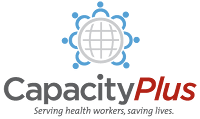Planning
Rapid Assessment of Health Services in Punjab using a Mixed Method Approach
The out-of-pocket expenditure is quite high in Punjab. Hence, a rapid review of health facilities was undertaken to suggest remedial measures.[from abstract]
- 727 reads
Strategic Planning for Health: A Case Study from Turkey
This report explores the role of strategic planning in Turkey’s successful transformation of its health sector since 2002. It analyses the evolution of strategic planning for health from an informal tool to an official and highly structured process that closely follows the steps identified in accepted models of strategic planning. [from abstract]
- 689 reads
Commonization of HIV/AIDS Services in Nigeria: the Need, the Processes and the Prospects
With the first case of Human Immunodeficiency Virus infection/Acquired Immunodeficiency Syndrome (HIV/AIDS) identified in 1986, the management of HIV/AIDS in Nigeria has evolved through the years. The emergency phase of the HIV/AIDS program, aimed at containing the HIV/AIDS epidemic within a short time frame, was carried out by international agencies that built structures separate from hospitals’ programs. It is imperative that Nigeria shifts from the previous paradigm to the concept of Commonization of HIV to achieve sustainability.
- 8982 reads
Global Fund Investments in Human Resources for Health: Innovation and Missed Opportunities for Health Systems Strengthening
Since the early 2000s, there have been large increases in donor financing of human resources for health (HRH), yet few studies have examined their effects on health systems. The objective of this paper is to determine the scope and impact of investments in HRH by the Global Fund to Fight AIDS, Tuberculosis and Malaria (Global Fund), the largest investor in HRH outside national governments. [adapted from abstract]
- 730 reads
Human Resource Management in Primary Health Care System
Qualified and motivated human resource (HR) is essential for a qualitative and robust health care delivery. Understanding the constraints and difficulties of health managers is essential for effective and efficient management of health care services. The present study is aimed at understanding the various constraints and difficulties of human resource management (HRM) in the public health sector. [from abstract]
- 1994 reads
Health Professional School Leadership and Health Sector Reform, Performance, and Practice
Health professional schools are important in that they produce health workers, the major input in the health system. Not only are labor costs a central part of the health budget, but the majority of all health system costs are determined by health worker variables. The practice behaviors and personal preferences of health workers will determine the communities in which they work and whether they practice primary or specialty care. In some countries, the amount of study and the magnitude of educational debt with which health workers graduate also significantly affect their practice behavior.
- 483 reads
Advancing the Application of Systems Thinking in Health: A Realist Evaluation of a Capacity Building Programme for District Managers in Tumkur, India
Health systems interventions, such as capacity-building of health workers, are implemented across districts in order to improve performance of healthcare organisations. However, such interventions often work in some settings and not in others. Local health systems could be visualised as complex adaptive systems that respond variously to inputs of capacity building interventions, depending on their local conditions and several individual, institutional, and environmental factors.
- 573 reads
Innovations to Reduce Hospital Readmissions and Avoidable Hospitalizations from Nursing Homes: Implications for the Health Workforce
The study was conducted to better understand the roles and functions of the health workforce responsible for managing patient transitions to and from hospitals and nursing homes in New York’s downstate region to reduce the number of readmissions and to improve care transitions. [adapted from introduction]
- 539 reads
Strategic Plan: Department of Health 2014/15 to 2018/19
The public health sector works to: promote health, prevent illness and injury, and influence the socio-economic and environmental determinants of health – including the social, economic, physical and environmental
factors that affect health. [from authors]
- 941 reads
Annual Performance Plan: 2014/15-2016/17
This strategic plan therefore, contributes to South Africa’s efforts to reduce child and maternal mortality and to control communicable and non-communicable diseases, as well as, in its efforts to encourage South Africans to embrace healthy lifestyle. [from introduction]
- 665 reads
Advocating for Malaria Elimination - Learning from the Successes of Other Infectious Disease Elimination Programmes
The global malaria community needs to work together, to ensure that the early steps towards the end goal of malaria elimination are taken.
- 742 reads
Impact of Inefficient Manpower Planning on Burnout
Organizational burnout refers to the added pressure and exertion at work place working environment. It is the responsibility of Human resource department to manage the burnout issues related to employees with effective manpower planning. [adapted from abstract]
- 768 reads
“In the driver’s seat”: The Health Sector Strategic Master Plan as an Instrument for Aid Coordination in Mongolia
This research explores the extent to which the [Health Sector Strategic Master Plan (HSSMP)] process served as a mechanism for effective aid coordination while promoting ownership and capacity building and the lessons learned for the wider international development community. [adapted from abstract]
- 628 reads
Health Sector Strategy and Economic Development in Cameroon: History, Challenges and Perspectives
There are complex and multisectoral interdependent relationships between health systems
and economic development in Cameroon that have been barely described in literature. Having analyzed these challenges, the author of this capstone proposes many policy alternatives to the Ministry of Public Health.
- 772 reads
Using Workshops to Develop Theories of Change in Give Low and Middle Income Countries: Lessons from the Programme for Improving Mental Health Care (PRIME)
Theory of Change (ToC) approach workshops are a useful approach for developing ToCs as a basis for mental health care plans because they facilitate logical, evidence based and contextualised plans, while promoting stakeholder buy in.
Because of the existing hierarchies within some health systems, strategies such as limiting the types of participants
and stratifying the workshops can be used to ensure productive workshops.
- 630 reads
Localization of Health Systems in Low- and Middle-Income Countries in Response to Long-Term Increases in Energy Prices
External challenges to health systems have received little attention in recent years, including the increase of prices for petroleum-based products. Health systems are significant consumers of fossil fuels in the form of petroleum-based medical supplies; transportation of goods, personnel and patients; and fuel for lighting, heating, cooling and medical equipment. Long-term increases in petroleum prices in the global market will have potentially devastating effects on health sectors who already struggle to deliver services to remote parts of their catchment areas. [adapted from abstract]
- 532 reads
Construction of a Decision Tool to Analyse Local Demand and Local Supply for GP Care Using a Synthetic Estimation Mode
This study addresses the growing academic and policy interest in the appropriate provision of local healthcare services to the healthcare needs of local populations to increase health status and decrease healthcare costs. However, for most local areas information on the demand for primary care and supply is missing.[from abstract]
- 636 reads
Applying the HRH Action Framework to Develop Sustainable Excellence in the Health Supply Chain Workforce
The objective of this technical brief is to create a bridge between the supply chain management and human resources for health communities by describing how the HRH Action Framework can be applied to strengthen the health supply chain workforce, drawing on lessons learned and successes from applications in the health sector. [from author]
- 760 reads
Road Map for Strengthening the Caribbean Health Workforce, 2012-2017
This road map proposes a five-year framework to guide policies for planning and managing the Caribbean workforce and education for enhancing the skills of that workforce. The thrust of the road map focuses on broadening primary health care access in the region and enhancing public health competencies, as well as strengthening the HRH planning and management capacity of the countries and the region. [from author]
- 1089 reads
Road Map for Scaling Up the Human Resources for Health for Improved Health Service Delivery in the African Region 2012-2015
The purpose of this document is to introduce the road map and highlight the key issues and challenges hindering the achievement of universal coverage of health care and relating to the human resources component of the health system. The document then sets forth a series of actions to be taken to overcome these challenges. [from author]
- 1031 reads
Construction of a Decision Tool to Analyze Local Demand and Local Supply for GP Care Using a Synthetic Estimation Model
This study addresses the growing academic and policy interest in the appropriate provision of local healthcare services to the healthcare needs of local populations to increase health status and decrease healthcare costs. The research goal is to examine the construction of a decision tool which enables healthcare planners to analyse local supply and demand in order to arrive at a better match. [from abstract]
- 672 reads
Accuracy of General Practitioner Workforce Projections
This study tested a workforce projection model in the Netherlands by comparing the ex-post projected number of general practitioners with the observed number of general practitioners between 1998 and 2011. [adapted from abstract]
- 740 reads
Saving Lives, Ensuring a Legacy: A Health Workforce Strategy for the Global Health Initiative
The health workforce crisis is widely recognized as a critical obstacle to achieving the Millennium Development Goals, as well as the global health goals of the United States Government. The Global Health Initiative recognizes this problem and includes expansion and appropriate deployment of the health workforce among its goals. However, this has yet to be translated into a coherent strategy with clear goals, resource allocation, technical approach, and indicators of progress. This paper addresses that gap in the US approach. [adapted from abstract]
- 600 reads
Towards Interventions in Human Resources for Health in Ghana: Evidence for Health Workforce Planning and Results
To address the lack of information to guide the development of policies and programs on HRH, this book aims to paint a comprehensive picture on HRH, consolidating new and existing evidence. The book highlights in particular new evidence on some of the underlying determinants impacting stock, distribution and performance of health workers in Ghana, including health worker production and attrition, management and accountability structures, the capacity of health training institutions, and health worker compensation. [from author]
- 1082 reads
Strengthening Human Resources for Health in Cote d'Ivoire
This short (4:38 minutes) video shares information about the Health Systems 20/20 assessment of the health system in Cote d’Ivoire. Based on the findings, the project worked with in-country partners to improve production of health workers, create incentives to motivate health workers to move to the underserved north, and build health management capacity. [from publisher]
- 854 reads
Right-Sizing Egypt's Health Workforce
This brief outlines an initiative to address some of Egypt’s health workforce challenges through the development of a workforce planning model to assess workforce needs and build ministry capacities in its implementation. [adapted from publisher]
- 1293 reads
Guidance on Using Needs Based Formulae and Gap Analysis in the Equitable Allocation of Health Care Resources in East and Southern Africa
This paper proposes that the needs-based formula be used to identify the provinces and districts that are furthest from their health equity targets and that they should receive priority for the allocation of additional budgetary resources. A detailed gap analysis focuses on comparing the current health human resources in each of these provinces and districts to national norms. [adapted from author]
- 801 reads
Models for Increasing the Health Workforce
This article outlines the need for and different types of models for increasing the health workforce in South Africa to create a stable human resource base in the health sector. [adapted from author]
- 738 reads
Workforce Planning Tool: User's Guide
This tool collects data related to the current size of staff by position and the facility workload for each department. It then uses worker activity standards developed by Egyptian expert panels to calculate the precise workforce required to meet the workload of each facility. The tool’s output capabilities display the size of the gaps between current and required staff, examined across facilities, specialty areas, and types of worker, as well as among specialties within a facility. [from author]
- 2193 reads
User's Manual for Developing a Workload-Based Staffing Model in Egypt
This manual is a how-to guide to the workload indicators of staffing need (WISN) process and its implementation in Egypt. It provides a
step-by-step review of the WISN method and the calculations used in the analysis of the workforce to determine staffing needs. This guide is largely based on the Egyptian experience with the WHO methodology and how it was tailored to meet Egypt’s specific context and needs. [from introduction]
- 1482 reads




